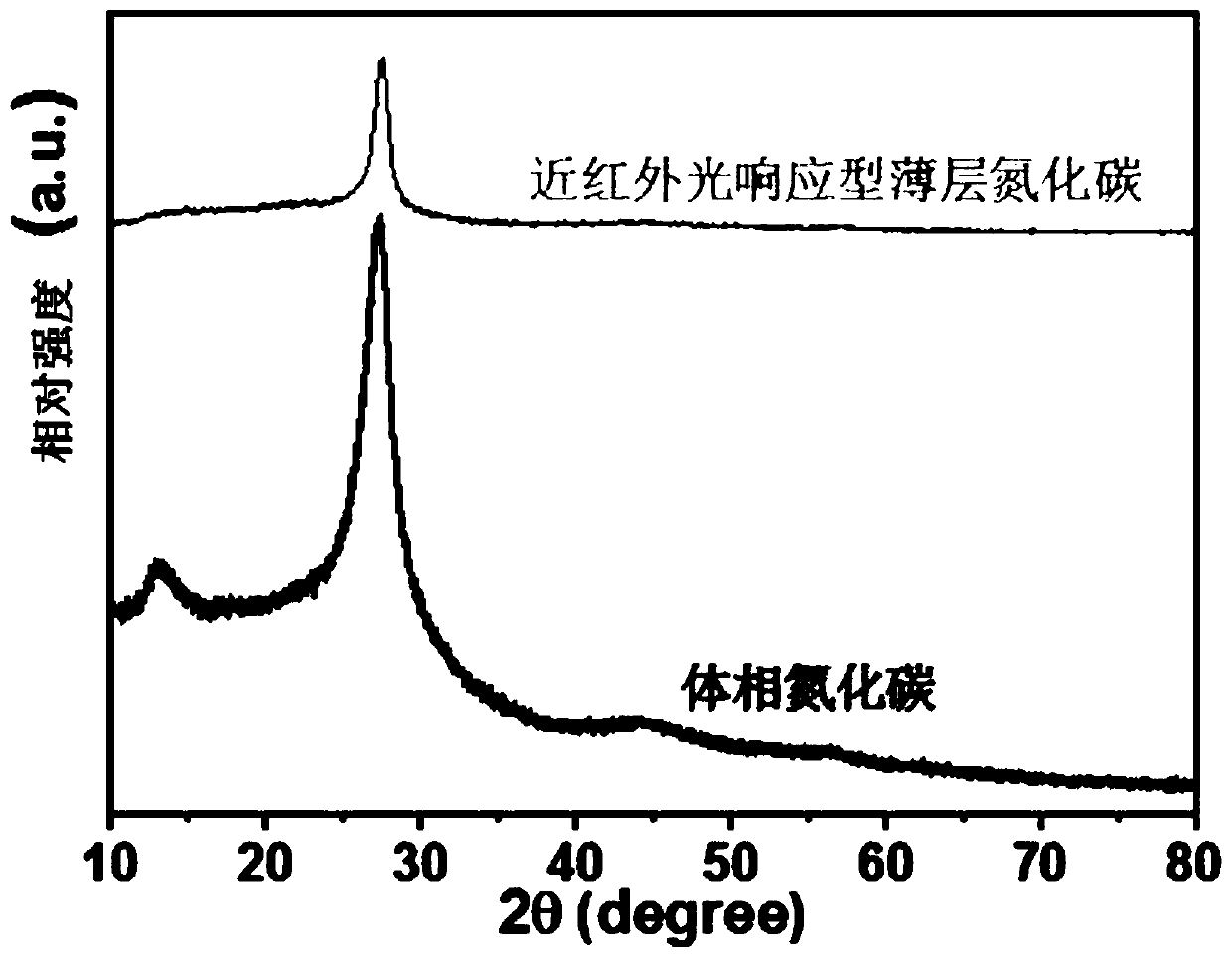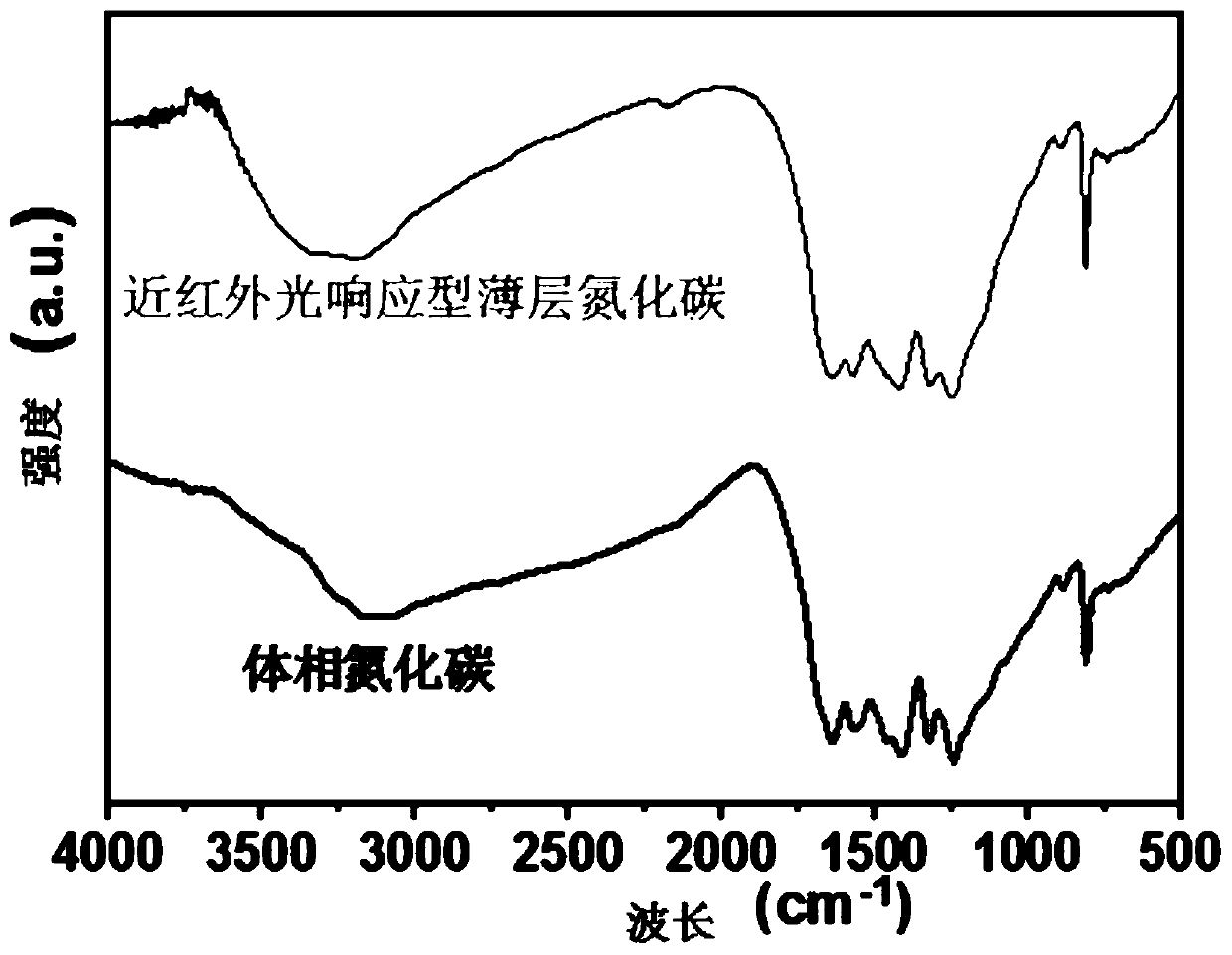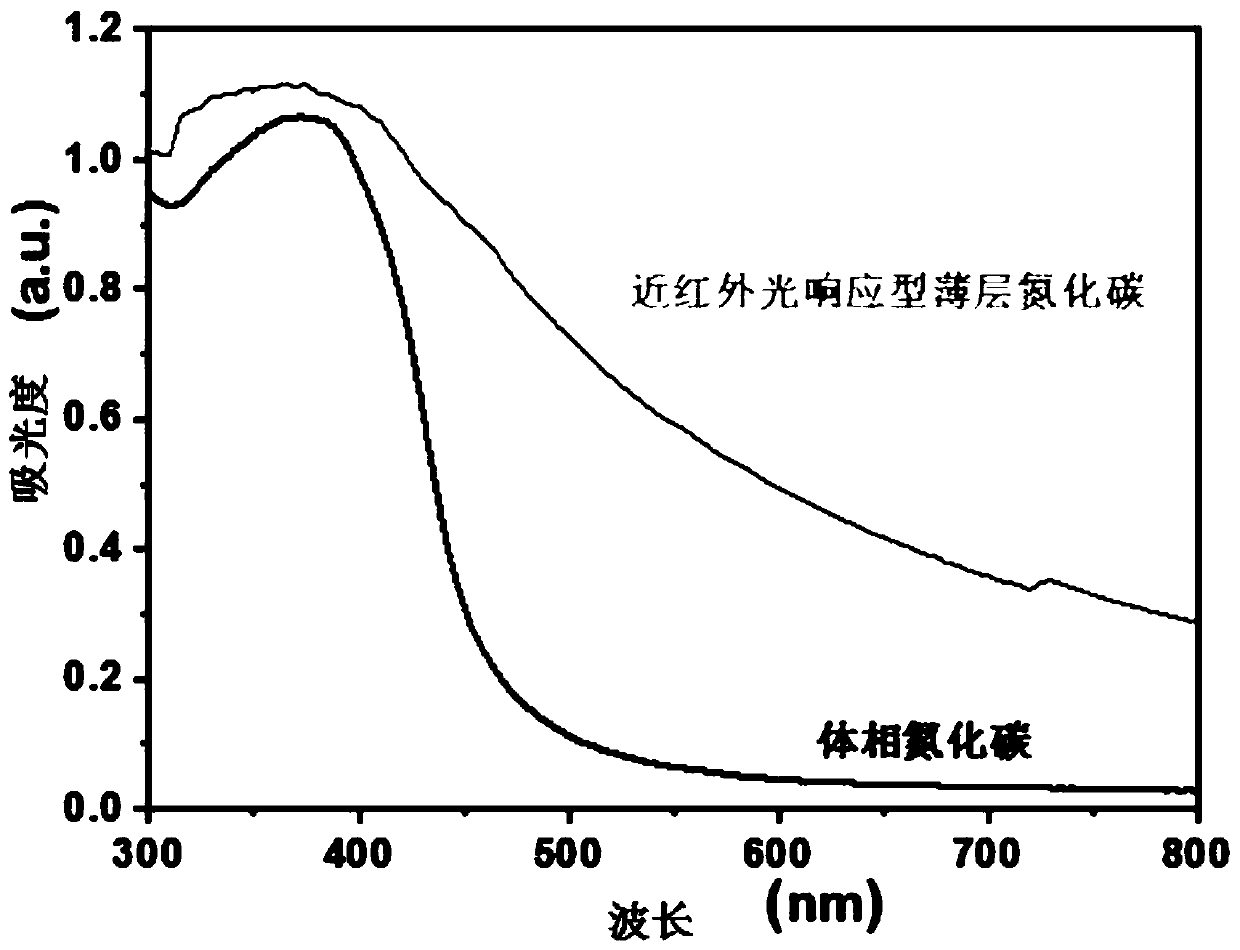Preparation method and application of near-infrared light response type thin-layer carbon nitride photocatalytic material
A technology of near-infrared photoresponsive and catalytic materials, which is applied in the field of preparation of near-infrared photoresponsive thin-layer carbon nitride photocatalytic materials, which can solve the problems of low utilization rate of sunlight and achieve high-efficiency photocatalytic degradation performance and simple raw materials , the effect of improving the utilization rate
- Summary
- Abstract
- Description
- Claims
- Application Information
AI Technical Summary
Problems solved by technology
Method used
Image
Examples
Embodiment 1
[0026] A method for preparing a near-infrared photoresponsive thin-layer carbon nitride photocatalytic material, comprising the following steps:
[0027] The first step (the first calcination): Weigh nine portions of 2.5 g melamine and place them in nine crucibles (the crucibles need to be covered), and place the nine crucibles (arranged in 3×3) in the central temperature of the muffle furnace. Calcination was carried out in a controlled area; the heating parameters were as follows: set the temperature from room temperature to 600 °C at a uniform speed after 220 min, and at 600 °C ◦ C for 4 hours; then cooled naturally, the obtained solid is near-infrared photoresponsive multilayer carbon nitride (non-commercial, prepared by the above steps), and the next stage of operation was carried out after grinding.
[0028] The second step (the second calcination): Weigh six parts of 0.4 g ground near-infrared light-responsive multilayer carbon nitride and place them in six arks, and pl...
Embodiment 2
[0030] A method for preparing a near-infrared photoresponsive thin-layer carbon nitride photocatalytic material, comprising the following steps:
[0031] The first step (the first calcination): Weigh nine portions of 2.8 g melamine and place them in nine crucibles (the crucibles need to be covered), and place the nine crucibles (arranged in 3×3) in the central temperature of the muffle furnace. Calcination was carried out in a controlled area; the heating parameters were as follows: set the temperature from room temperature to 620 °C at a constant speed for 250 min, and keep it at 620 °C for 3 hours; Non-commercial, prepared by the above steps), after grinding, proceed to the next stage of operation.
[0032] The second step (the second calcination): Weigh six parts of 0.5 g ground near-infrared light-responsive multilayer carbon nitride and place them in six arks, and place the six arks (in a 3×2 arrangement) Calcination was carried out in the central temperature control zon...
Embodiment 3
[0034] A method for preparing a near-infrared photoresponsive thin-layer carbon nitride photocatalytic material, comprising the following steps:
[0035] The first step (the first calcination): Weigh nine parts of 3 g melamine and place them in nine crucibles (the crucibles need to be covered), and put the nine crucibles (arranged in 3×3) in the central temperature of the muffle furnace. Calcination was carried out in a controlled area; the heating parameters were as follows: set the temperature from room temperature to 650 °C at a uniform rate after 300 min, and set the temperature at 650 °C ◦ C for 2 hours; then cooled naturally, the obtained solid is near-infrared photoresponsive multilayer carbon nitride (non-commercial, prepared by the above steps), and the next stage of operation was carried out after grinding.
[0036] The second step (the second calcination): Weigh six parts of 0.6 g of ground near-infrared light-responsive multilayer carbon nitride and place them in s...
PUM
| Property | Measurement | Unit |
|---|---|---|
| size | aaaaa | aaaaa |
| catalytic efficiency | aaaaa | aaaaa |
Abstract
Description
Claims
Application Information
 Login to View More
Login to View More - R&D
- Intellectual Property
- Life Sciences
- Materials
- Tech Scout
- Unparalleled Data Quality
- Higher Quality Content
- 60% Fewer Hallucinations
Browse by: Latest US Patents, China's latest patents, Technical Efficacy Thesaurus, Application Domain, Technology Topic, Popular Technical Reports.
© 2025 PatSnap. All rights reserved.Legal|Privacy policy|Modern Slavery Act Transparency Statement|Sitemap|About US| Contact US: help@patsnap.com



